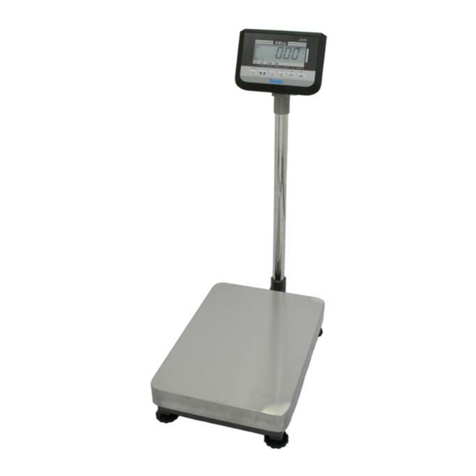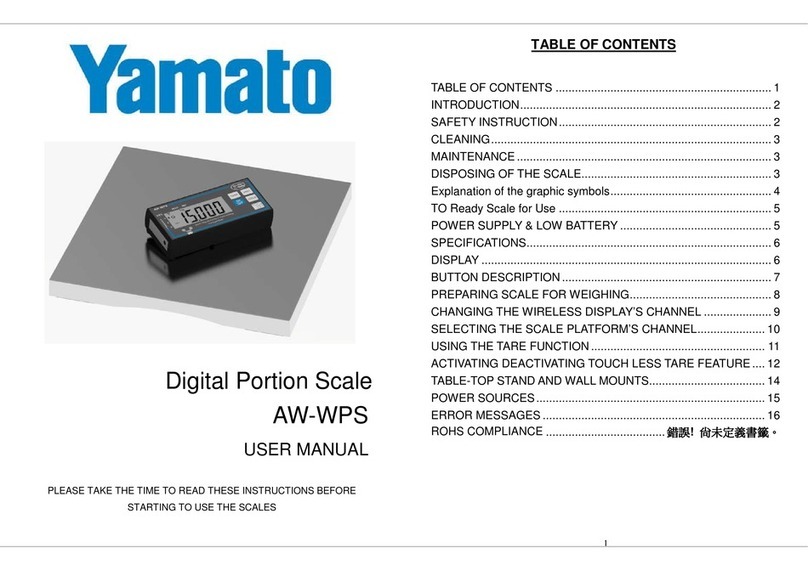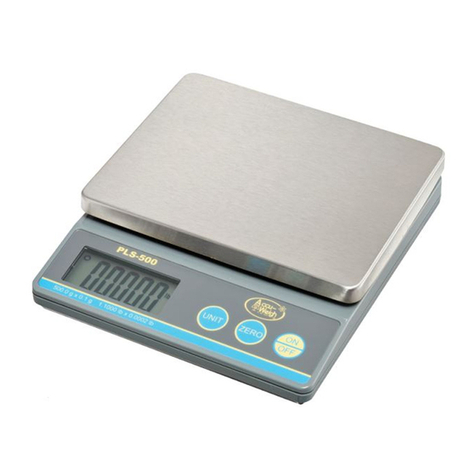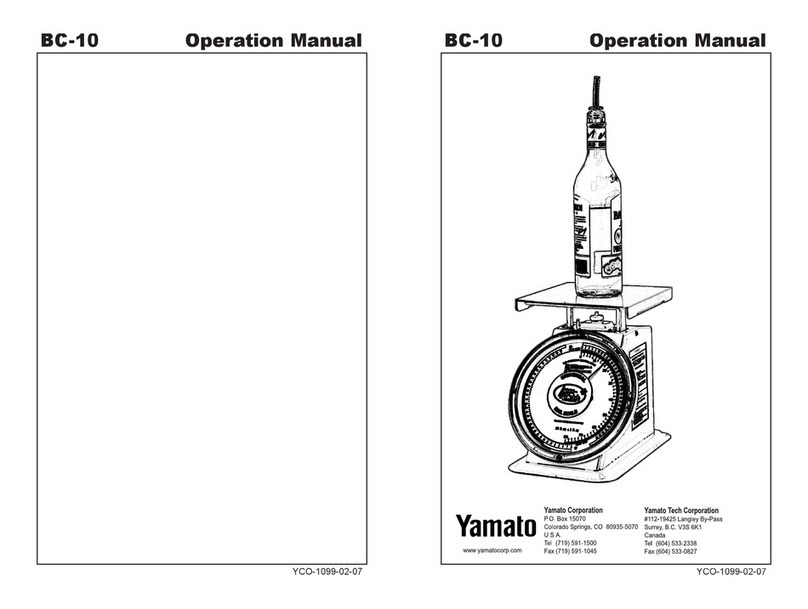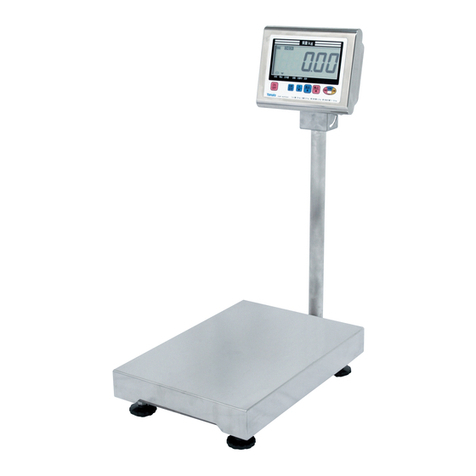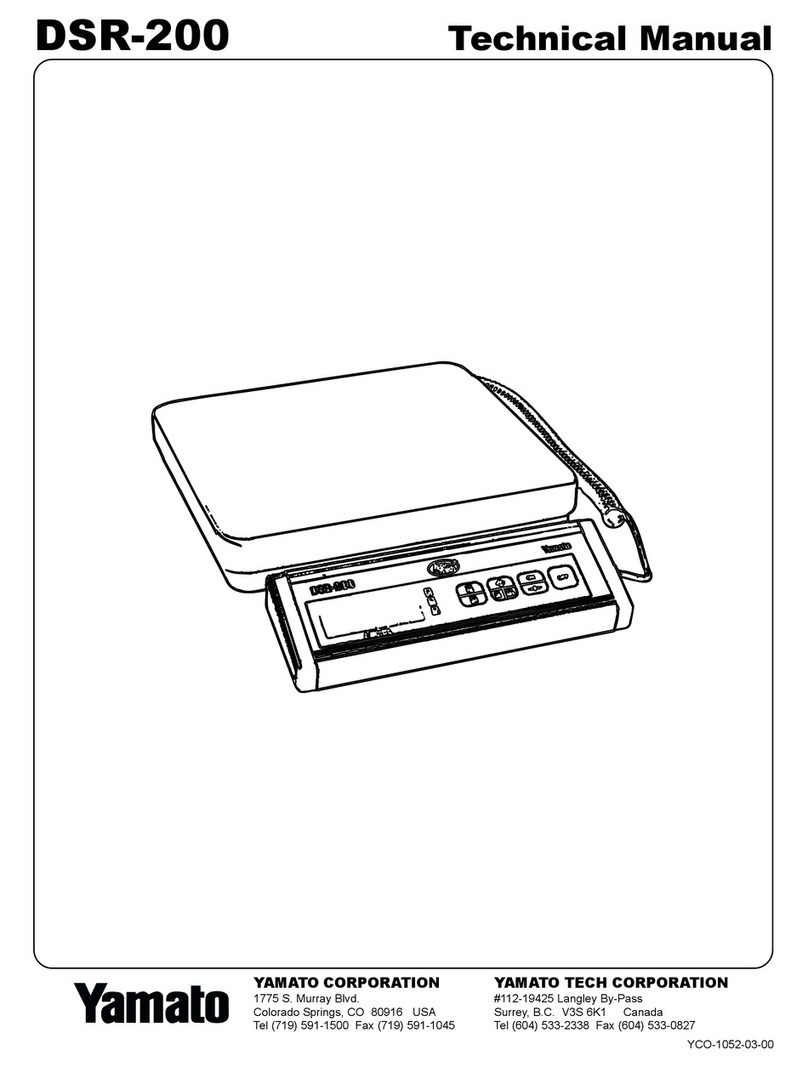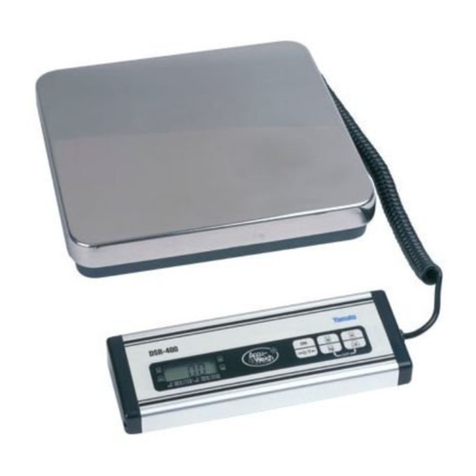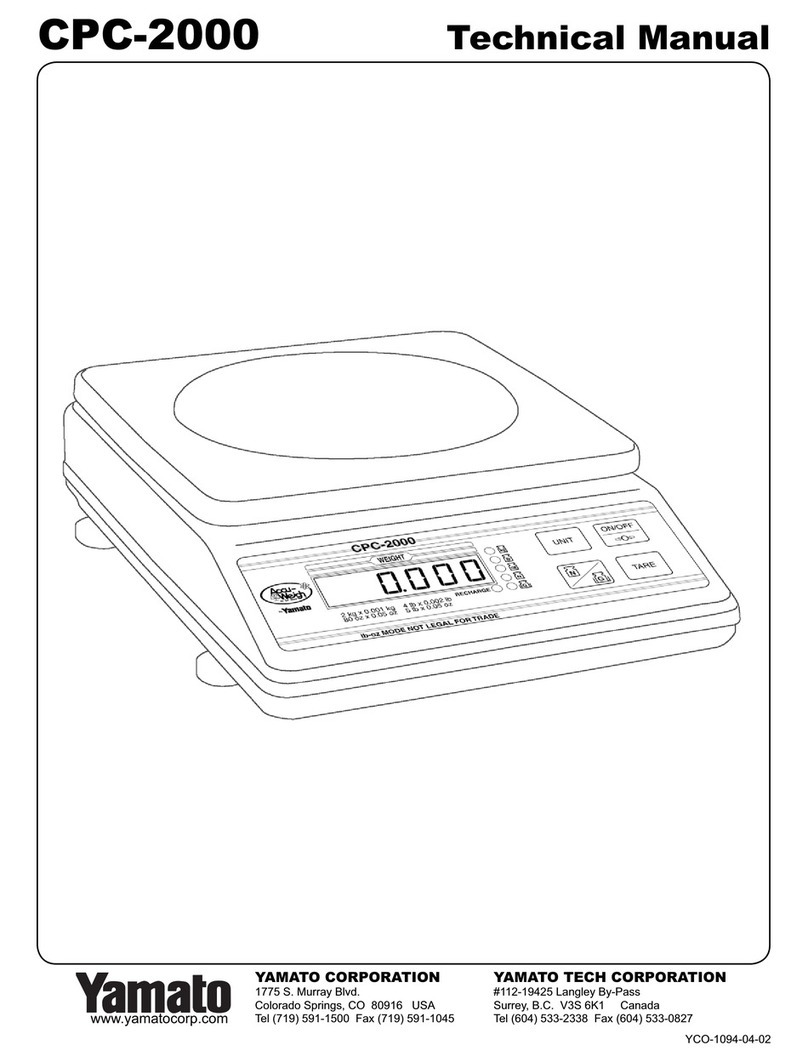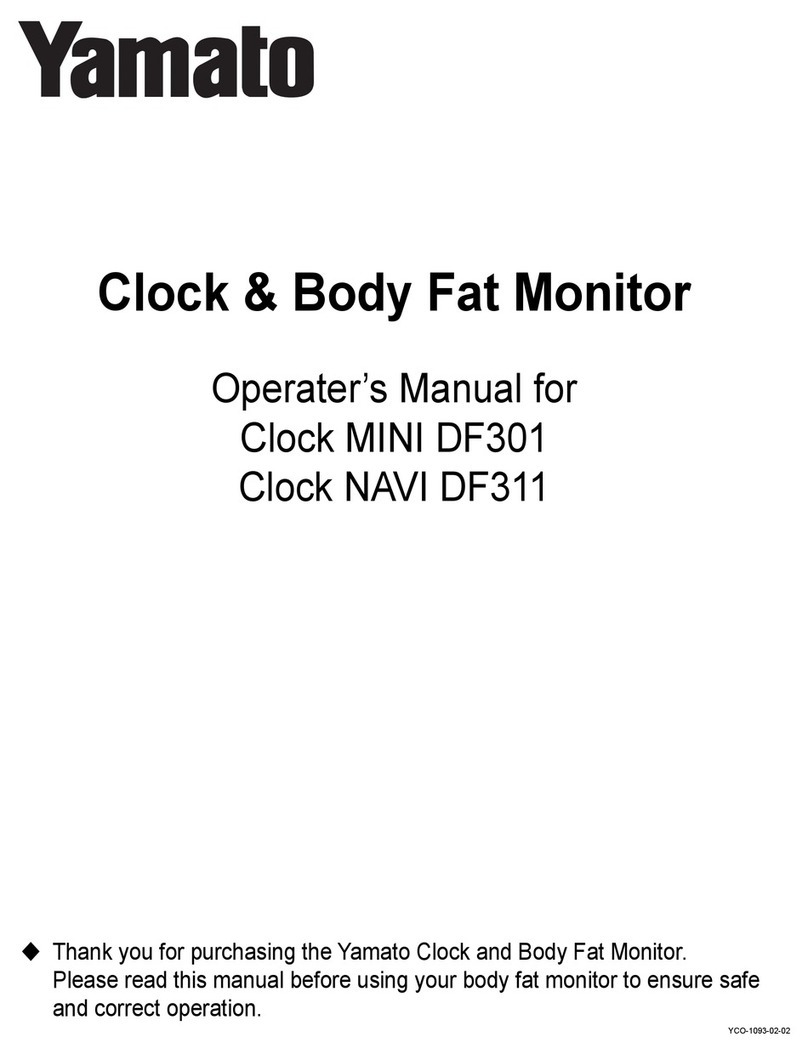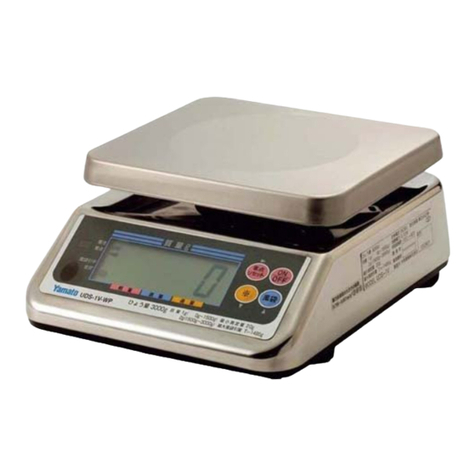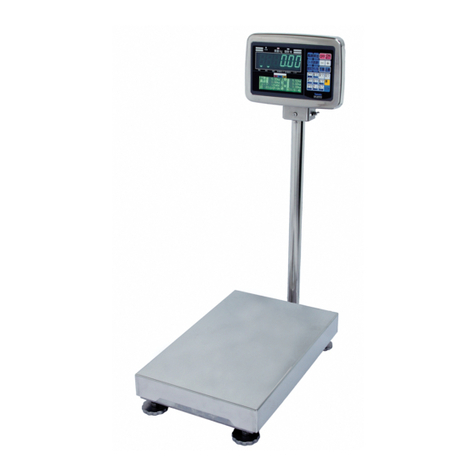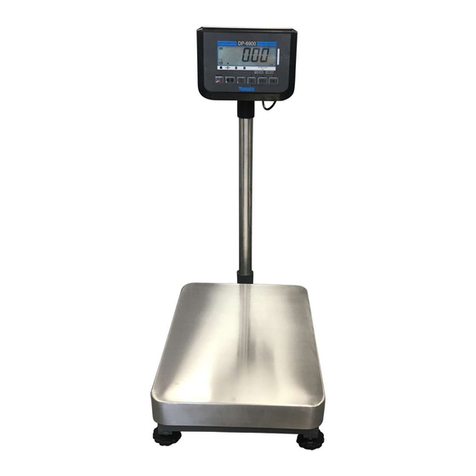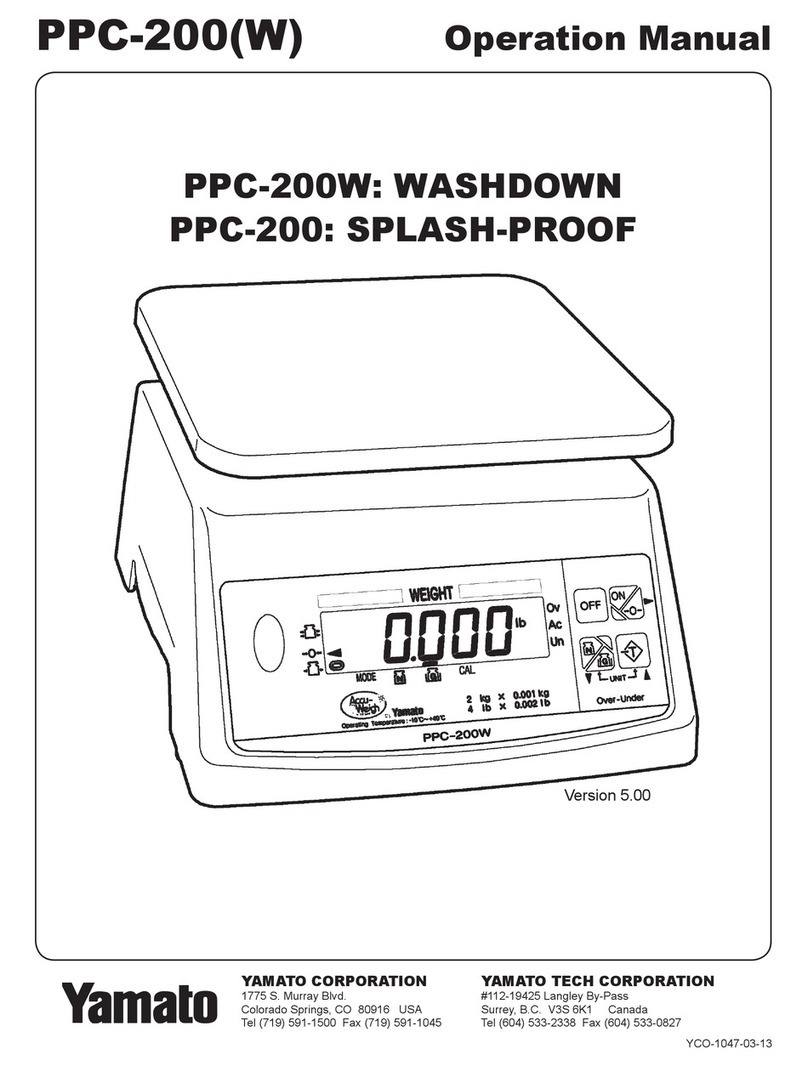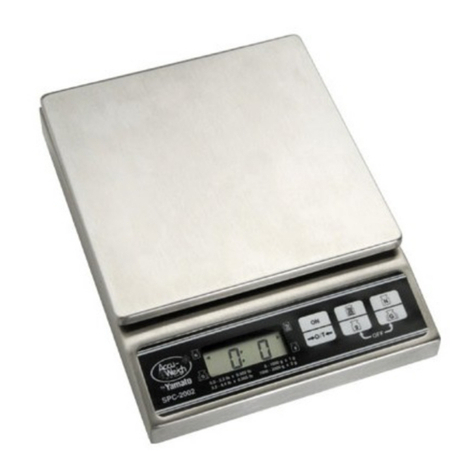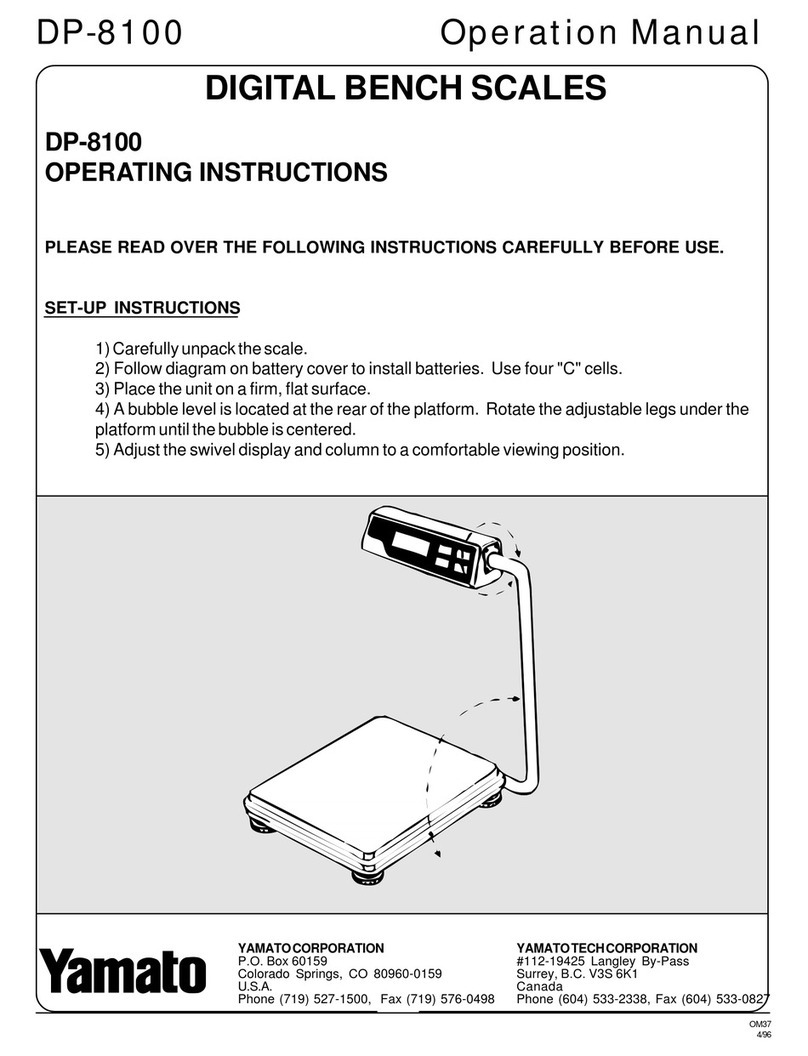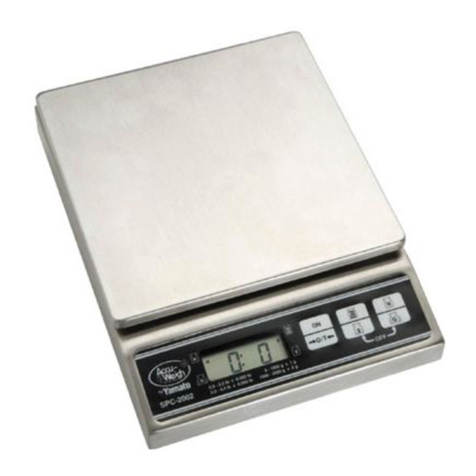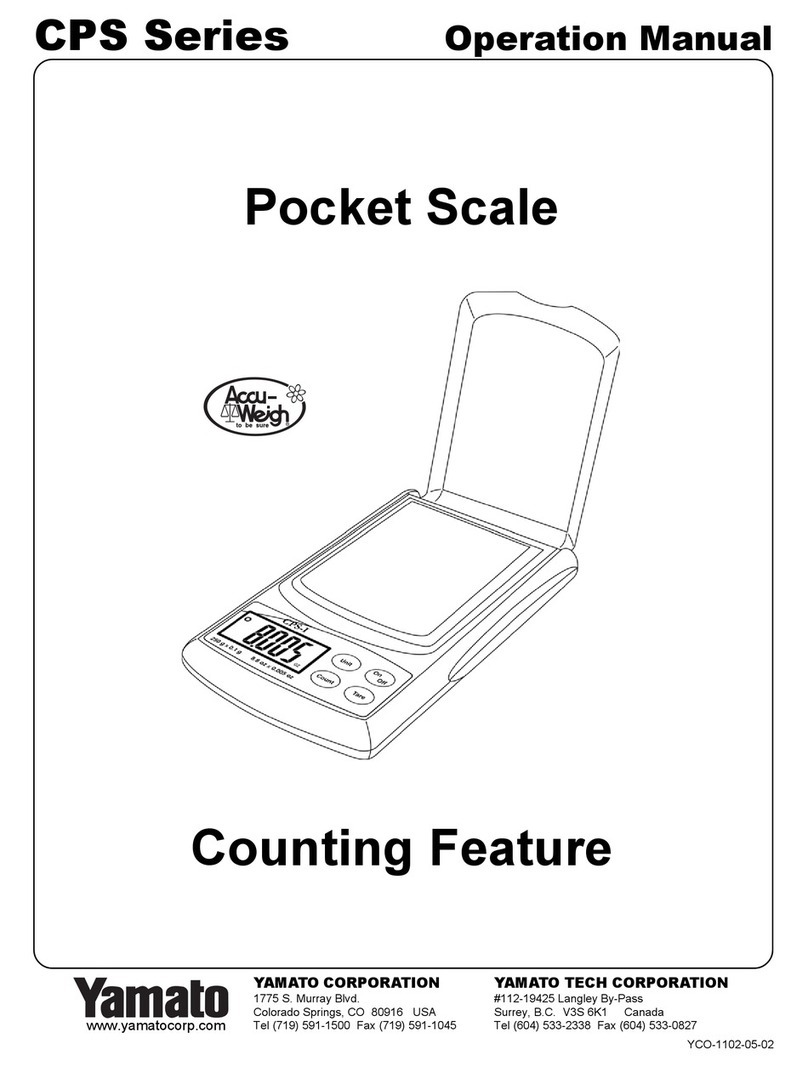
PPC-200(W) Operation Manual
YCO-1047-03-13
SAFETY INSTRUCTIONS
Before using the scale, carefully read, understand, and follow the “Safety Instructions” described in this manual. Observe the
advice given in the “Operations” section to ensure proper operation. Keep this operation manual handy for reference.
1) DO NOT SHOCK LOAD the scale, Never step on or sit on the scale. Not only will the scale be damaged, but you may
also be injured.
2) DO NOT TWIST platform this will damage the scale.
3) DO NOT APPLY DIRECT WATER SPRAY to underside of scale!!
4) Do not operate the scale if there is smoke or a burnt smell coming from the scale. Remove the batteries or unplug the
AC adaptor immediately. After making sure that there is no danger, consult your dealer. Never try to repair the scale
by yourself.
5) This scale is not an explosion‑proof model. Do not use the scale in an atmosphere containing ammable gases or
explosive fumes. A re or an explosion can result.
6) Place the item to be weighed in the center of the platform. Items placed on the edge of the platform may fall off and
cause injury.
7) When weighing a heavy, large or unbalanced item, make sure the item is stable on the platform, otherwise, an accident
may occur.
8) When carrying or moving the scale, be sure to hold it by the bottom of the base with both hands. If you hold it by the
platform, the platform or the platform support may become detached causing the scale to fall. This will damage the scale.
The platform is designed for easy removal and clean-up.
9) Do not insert your nger into the gap or holes in the scale. You may be injured.
10) The PPC-200(W) uses a liquid crystal display. If the LCD breaks and the liquid leaks from the LCD, do not touch it with
your ngers. The liquid is toxic if ingested. Be especially careful around small children.
To prevent damage to the scale
1) Do not push the indicator or keys with sharp objects. They may break or puncture the switch membrane panel.
2) Use the specied power supply and choose a suitable environment. If you do not, the weight readings may be inaccurate
and the scale may be damaged.
3) The scale is a sensitive weighing instrument, avoid physical shocks. If you drop something on the scale, step on the plat-
form, or drop it, the scale may be damaged and lose accuracy.
4) If the scale becomes dirty, wipe it with a soft cloth. For stubborn stains, apply a little neutral detergent and then wipe the
scale with a dry cloth. Do not use thinner, benzene, hot water, or chemical agents, all of which can cause deformation, dis-
coloration, or deterioration of the scale.
5) Never remove the case. The ne adjustment section may be damaged and you may be injured by sharp edges on the
internal parts.
6) Do not place the scale upside down on the scale platform.
7) When the low battery indicator appears, replace all six of the batteries. When installing the batteries, install them accord-
ing to the polarity markings in the case (+, -). If the scale will not be used for a long period, remove the batteries.
To keep the scale working efciently
1) Place the scale on a at stable surface that will support the scale and the load.
2) Do not place the scale in an area exposed to direct sunlight or to wind currents from an air conditioner, otherwise, the
weights will not be accurate.
3) Do not place the scale near machines that create vibrations or electromagnetic disturbance, such as microwave ovens,
portable phones, or large motors. This will affect the accuracy.
4) The operating temperature range is from –5°C to +35°C (23°F to 95°F). Do not subject the scale to sudden temperature
changes; allow the scale to adjust to the new temperature before use.
5) If the scale is sealed, do not break the seal. If you break the seal, the scale will not be considered legal for trade. In this
case, contact your dealer.
6) Do not disassemble or modify the scale, you will void the warranty. Modied scales will not be legal for trade.
7) The PPC-200 is not a washdown scale, it is splash-proof. Do not use a water sprayer on the PPC-200 and do not use it in
an extremely humid or dusty environment.
8) The PPC-220W is a washdown scale, but is not a submersible scale. Do not place the PPC-200W in water higher than
the bottom of the housing. Do not spray water up into the underside of the PPC-200W.


